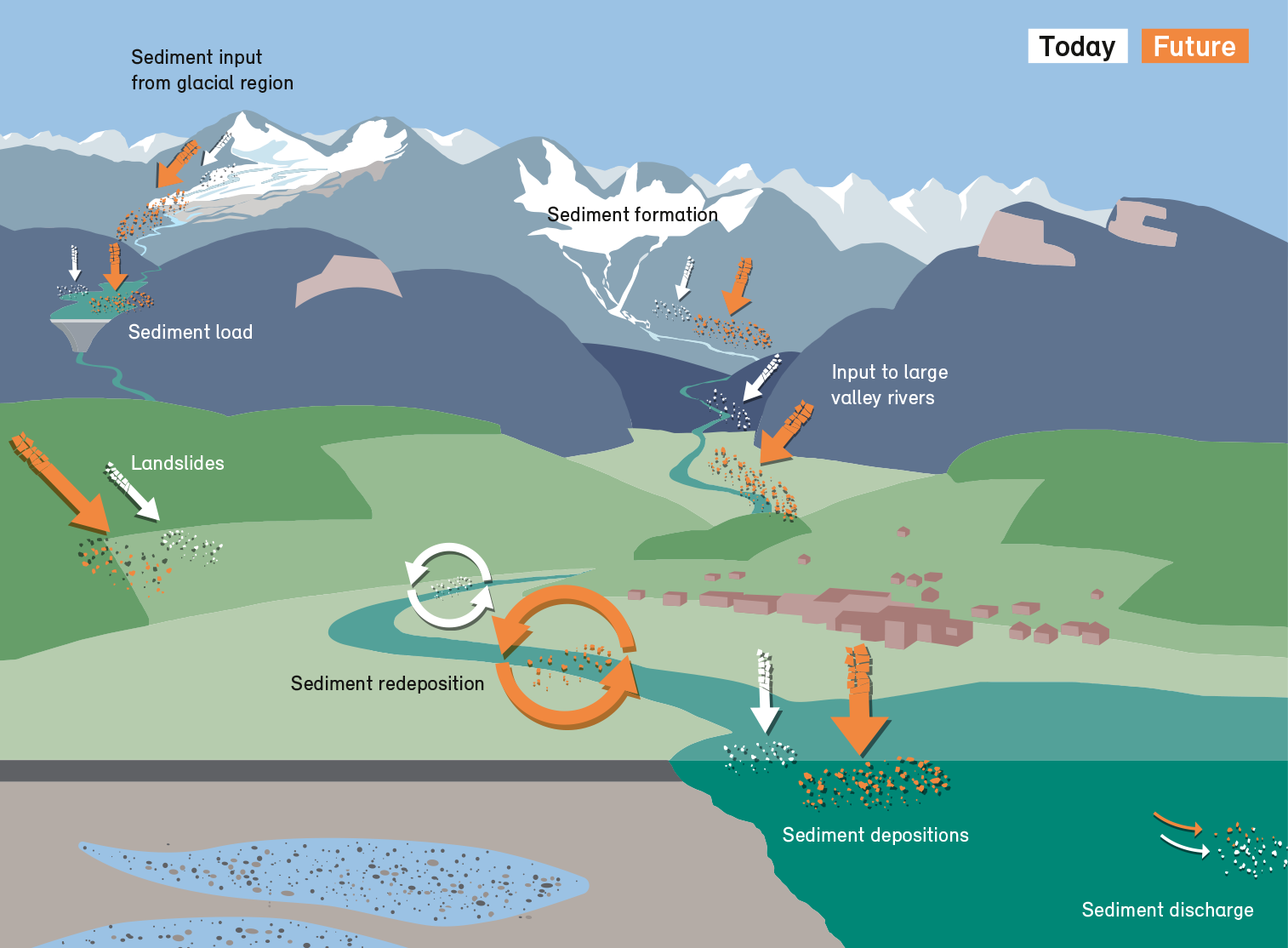In Switzerland, melting of the glaciers, a shift of the zero-degree isotherm to higher elevations and thawing of the permafrost have been observed for some time. These developments will be exacerbated in future due to climate change.

The glaciers have great importance for the water balance, because they store precipitation over seasons, years, decades or even centuries. Glaciers make a vital contribution to the discharges from many alpine water bodies, including the great Rhine and Rhone rivers, particularly in hot and dry periods in summer.
Disappearing glaciers
The glacier scenarios show that a large percentage of the ice fields in the Alps will have disappeared by the end of the century. With climate change mitigation, some 37% of the 2017 glacier volume will remain, but only around 5% without climate change mitigation. Summer discharge from glaciers will be strongly reduced.
Glacier volume
By the end of the century the greatest volume of ice will be located in the Rhone basin (Valais). In contrast, the Rhine basin will lose all its glaciers apart from a few stretches of ice in the Bernese Oberland. The Engadine and Ticino will be totally ice free.
Glaciers are melting
Less water stored in snow
Snowpack is another natural water reservoir which is crucially important for the seasonal water balance in Switzerland. According to model calculations, in the current 1981–2010 reference period some 40% (22 km3) of the total annual runoff came from the snowpack. This builds up in the alpine region over the winter and normally reaches its peak in March. The ensuing snow melt dominates discharge in many catchments in spring and early summer.
The snow cover responds very sensitively to changes in temperature and precipitation, making it a good indicator of changes in climate. Due to the increase in temperature, a higher proportion of the precipitation is already falling as rain rather than snow, particularly at lower levels, and so reaching the streams and rivers more quickly. Snow melt is also occurring earlier in the season due to the higher temperatures. This is shortening the period of snow cover and reducing the quantity of water stored temporarily in the snow.
The hydrological scenarios Hydro-CH2018 indicate a decrease in the average annual water quantity stored in the snowpack by the end of the century of 42% with climate change mitigation and 78% without climate change mitigation. At the same time, the maximum snow volume will shift from March to February.
The expected increase in winter precipitation will only have a positive impact on the snowpack at very high elevations, because the temperature will be increasing at the same time, and it will not compensate for the general decrease in snow volumes. These changes in snowpack have significant effects on seasonal runoff.
Mean change in the amount of water stored in the snowpack without climate change mitigation by the mid and end of the century for elevations above 1500 MASL
More sediment if the permafrost thaws
An increase in heavy precipitation, thawing of the permafrost and melting of glaciers may lead to more erosion, landslides and rockfalls. More material will then be available in the water for sediment transport.
Higher sediment transport changes the discharge characteristics and channel morphology. This can have negative consequences for flood protection, restrict the output of hydropower plants and harm the water ecology.
Schematic representation of the changes in sediment transport in an example of a water system in the mountains
Documents

The report ‘Effects of climate change on Swiss waters’ gives a concise overview of the results and is a gateway to further technical information and data.
Last modification 12.05.2021
Contact
Federal Office for the Environment FOEN
Hydrology Division
Papiermühlestr. 172
3063 Ittigen













